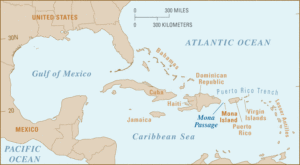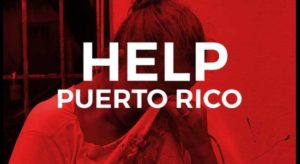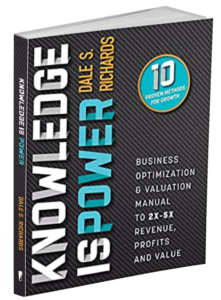US Puerto Rico: Still Desperately Needing Aid
Puerto Rico is not even a third world country, but now they look like they are. It is estimated that nearly 1/2 of Puerto Rico’s housing (about a million homes) were built illegally (shantytowns). Add on top of that, the destruction Hurricane Maria inflicted on the tiny island, and you have a humanitarian housing crisis, animal, food, and water crisis. There is nothing left but rubble in many areas.
It’s been months!
Hurricane Storm Maria made landfall on September 20, as a nearly Category 5 hurricane that lasted approximately 30 hours. A combination of elements caused Maria to transform from a disaster to a “catastrophic event”, meaning it wiped out nearly most of the infrastructure on the small US territory island.
According to news sources, Hurricane Maria hit Puerto Rico with the equivalent of a 50-mile wide tornado; Puerto Rico took a direct hit. FEMA and government response didn’t reach those in distant locations immediately after the hurricane. Some didn’t see any type of aid upward for a month or more. When aid did finally arrive, most of that aid came from community organizers and not government aid. People were hiking in to deliver groceries and even some medicines.
Over 300,000 evacuees transcended into Florida after the hurricane. The aid for these evacuees living in hotels will begin to run out this month. On the island, there is also now a growing Mental Health Crisis, and the increase in suicides is escalating. People are desperate for help.
Electricity
With the largest US blackout ever recorded, many Puerto Ricans still don’t have electricity today. Only 75% electricity has been restored. Another 1/3 of the population is still without power. No electricity means no power to pump water into homes, no water to bathe or flush toilets. Freshwater is scarce.
Freshwater is scarce
While disaster recovery aid packages are in the works, the US Puerto Rican territory was already bankrupt before the storm. It’s not just infrastructure that will need to be restored, it’s the billions of dollars they were already indebted.
With a poverty rate of over 44%, devastated Puerto Ricans are badly in need of proper food, clean water, and housing. FEMA money is also scheduled to run out in Mid-March for the tiny US Territory. There are community organizers on the ground taking computers to remote locations to try to get as many people signed up with aid as quickly as possible – but it’s a daunting task. Many cell towers were knocked out in the storm, so communication is at a very low capacity still. Reaching the people, and the people being able to reach out is difficult.
Probably half of American’s do not even know that Puerto Rico has 3.4 million US citizens living there. Citizens who are entitled to the same government response as any state, like New York, Washington, or California, etc. But half of Americans don’t even know that.
Housing & FEMA
The island is dependent on U.S. relief from FEMA, the SBA, and HUD.
In the impoverished area of Puerto Rico, many people have no title to their homes, and most were constructed without permits. These squatter community homes range from one room shacks to family homes (Informal homes). However, one of the rules of FEMA eligibility is that the owners need to prove property ownership.
FEMA states that it will now help those owners of “informal homes” if they can prove some sort of residency. The cap for disaster aid is $33,000 to individuals, but awards are often much lower than that.
Another compounding problem is that applicants are giving up on FEMA aid. The application process first has to go through the SBA loan process. No one can afford a loan, so applicants just give up. Even though they aren’t required to follow through on the SBA process – they can’t qualify for FEMA aid unless they do. It is only after the SBA denies the applicant that FEMA will provide a grant. There are organizers on the ground to try to help educate people about this. But it is a slow process.
There is a need to “Build back better,” say’s Puerto Rico, Governor Ricardo Rossello.
“Build back better”
A little knowledge goes a long way. I found this description from Odyssey:
 “Puerto Rico has been a commonwealth of the United States since 1898 during the Hispanic-American War. The result of the war was that the United States ended up with Puerto Rico, Philippines, and Guam. This means that Puerto Ricans ARE American citizens. It also makes Puerto Rico a territory of the United States”.
“Puerto Rico has been a commonwealth of the United States since 1898 during the Hispanic-American War. The result of the war was that the United States ended up with Puerto Rico, Philippines, and Guam. This means that Puerto Ricans ARE American citizens. It also makes Puerto Rico a territory of the United States”.
While a Puerto Rican can fight for the United States Government – If they live on the island they cannot vote in US Presidental and Congressional elections! They can only vote in the primary elections. If they live on the mainland US, then they can vote in all the US elections.
Puerto Ricans have been citizens of the United States since 1917 when President Woodrow Wilson signed the Jones-Shafroth Act.
Ways to Help
Spontaneous volunteers are needed to help build housing and schools. One group called All Hands and Hearts – Smart Response has been bringing in teams of volunteers to work on building secure homes and community structures. Their motto is “Come Early and Stay Late”.
 Other organizations coming to the call of Puerto Rico (just to name a few)
Other organizations coming to the call of Puerto Rico (just to name a few)
- World Hope
- LDS Church Humanitarian Aid
- Red Cross
- Centro Donate Help Puerto Rico
- Habitat Hammers Back
ABOUT DALE S. RICHARDS:
Dale S. Richards specializes in management, marketing, operation optimization & business valuation consulting and is a 30+ year turnaround expert. He has implemented success concepts into results in 150+ companies. Dale is a Certified Valuation Analyst (CVA) with NACVA, Eight-Year Vistage Chair & International Speaker.



